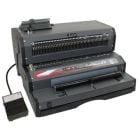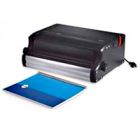Writing and Self-Publishing a Business Book
If you have something unique to offer the business world, you may be considering writing and publishing your own book. Here are some basic steps to help you in getting started.
Finding A Niche:
Just like in business, the key to a successful business book is finding an heretofore unexplored niche and filling it. Chances are this has already occurred to you, but if you have not already done so, take a good hard look around, do some research and see what books already exist in your chosen niche. Is the market already saturated? If the answer it yes, then you will want to move on. Are there already books out there, but they lack accuracy or are missing some key aspects of your niche that you feel business readers could benefit from? That is a much better situation, and one that you can use down the road when it comes time to do your marketing.
If you are an expert in the field you have chosen to write your book about, that's great. If you are not, though, don't let that stop you - that just means that you will have to dig in and do some serious research. What you will need to do is find as many experts as you can and conduct several in-depth interviews with them. These experts will lead you in directions that you perhaps hadn't planned, and also give you some great ideas of where to conduct further research.
Writing:
Just like with any major writing project, you will want to start with an outline, and work from there. If you are finding that the words aren't coming as easily as you had hoped, just take out a notebook and write a free association, off the top of your head, on whatever crosses your mind. This exercise helps in a couple of different ways: it helps get the creative juices flowing, and the things you write may give you some insight as to what it is that is blocking you. Whatever you do, don't edit, judge, or even think too long about this writing. Just use it to get yourself going and let it be.
Organize your book into chapters and sections, and wherever appropriate, use paragraph breaks, bullet points and graphics to enhance readability. People tend to get intimidated or bored by long blocks of text, so be sure to include some white space where you can.
After you have worked through your drafts and have gotten to what you consider to be the final product, enlist some help with the editing and proofreading. After having spent so long with your project you will naturally lose objectivity. Get some other, fresher, eyes on your work, either in the form of a trusted (and qualified) friend, or a professional editor.
Printing, Layout, and Binding:
If you are doing this yourself, you will want to make sure that you have the book properly layed out and the pages numbered. If you are unfamiliar with layout and typesetting software, you may heed to outsource this. The pages should be printed with a high-quality laser printer. As far as binding, you can send it away, take it to the print shop, or purchase your own thermal (hardcover) binding machine for less than $100 and to the work yourself, as it is remarkably simple. The latter gives you both flexibility and saves you money over time, so if you have the time and inclination, self-binding may be the way to go.









